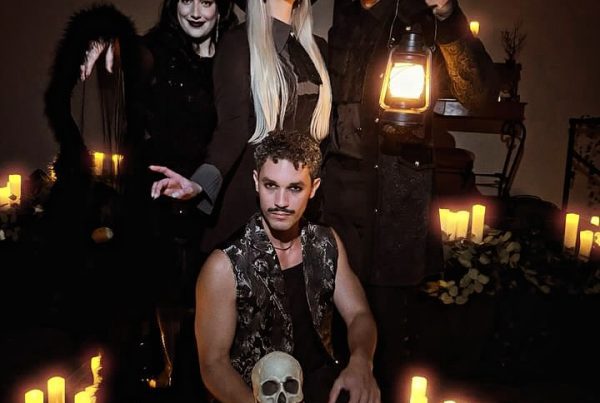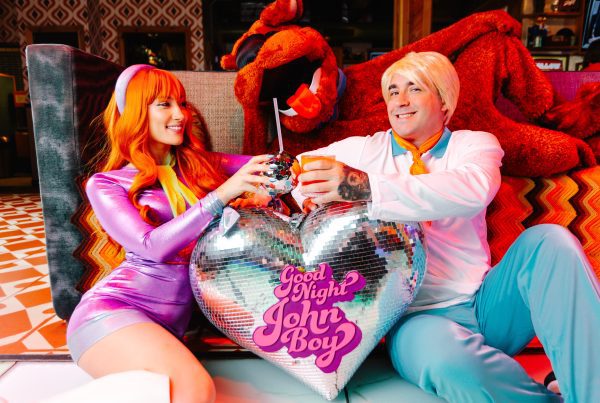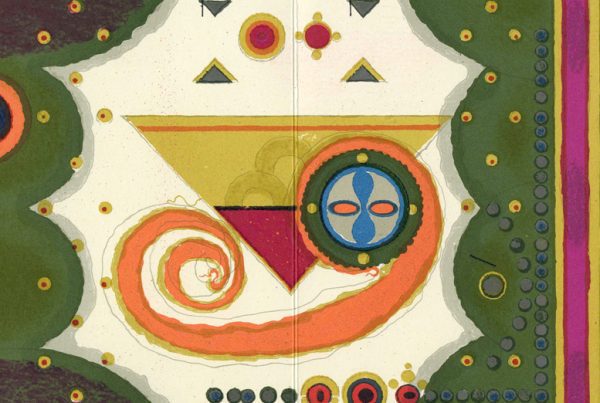You’re not supposed to pick favorites, but for Margo McKnight, it’s Sassy the Florida panther.
As the president and CEO of the Palm Beach Zoo & Conservation Society since 2018, McKnight is a Jack Hanna-meets-Jane Goodall of sorts, or maybe with her wide-brim hat, a Jane of the Jungle, greeting animals as she makes her way through the lush property. But when she comes to Sassy’s enclosure, McKnight lights up, coming face-to-face with one of about 200 of our state’s enchanted creatures. At just 78 pounds, Sassy is tinier than you’d imagine, swiftly and somehow silently stepping on crunchy leaves, and living up to her name as she investigates her visitor through the glass.
McKnight says of spending time with Sassy, “Now it’s part of your memory. Now it’s part of your DNA, and those experiences make a difference.”
These animals at the zoo become diplomats of sorts, helping visitors feel connected to creatures we might only see on TV or social media. But once you’ve looked into the eyes of Sassy the panther, you’re more motivated to help others as they re-up their numbers—there were once only about 20 in the entire state, and on the brink of extinction.
“If we can get people connected to a panther, and then when they hear the next time what’s going on with the [wildlife] corridor, it’s more personal to them,” McKnight says.

With an illustrious career in wildlife conservation and habitat construction, McKnight has only elevated the zoo’s standing in the community and also as a part of the overall mission to, for lack of a better phrase, save the planet. Born and raised in north Miami-Dade County, she grew up going to Zoo Miami (back when it was on Key Biscayne) and walking the Anhinga Trail in the Everglades. “I just remember being on that trail, and I couldn’t believe how close I was to wild things, like alligators were right there, amazing amounts of birds were right there,” McKnight says. “That’s the first time I remember being really hooked.”
Her career began at Busch Gardens Tampa Bay, where she worked to put herself through college and then stayed for 18 years; it was here that she fell in love with connecting the public with wildlife and conservation efforts. Her next stop was as executive director of the Brevard Zoo in Melbourne, where she developed a groundbreaking program where visitors could kayak through the zoo. She then became the executive director of the Wildlands Network, working alongside scientists who specialize in predator ecology and corridor ecology. However, she yearned to get back in front of the general public, leading her to the Florida Aquarium in Tampa, where she collaborated with the National Aquarium of Cuba and designed the Center for Conservation at Apollo Beach, which focuses on sharks, sea turtles and coral conservation.
With such a powerhouse in our midst, and in honor of Florida Panther Day on March 15, we sat down with McKnight to discuss the role of zoos in today’s eco-conscious world.
How does your background in construction and design play into your work at the zoo?
It’s all about, how do we make people feel when they’re coming through here? And how can we create those intimate experiences? … We have selected the species that we’re going to be having here for the ability to engage our guests and for those animals to be able to be taken care of in the highest possible way. So creating big spaces for them to move around, having expert staff that know how to work with the animal, and then connecting them all to real-world wildlife conservation is like the trifecta.
We know that when you take out one piece of the ecological puzzle, it has a domino effect. Can you give us an example?
Birds that nest alongside rivers and ponds and marshes [are] called wading birds, and we’ve got many species. They’re beautiful. If you don’t have alligators, you rarely have those big rookeries, because the alligators keep all the possums and raccoons and small mammals from crawling up the trees and totally decimating the babies. So rookeries don’t even start if there’s no alligators. … Alligators have made a great comeback, so that’s a good thing in places where they were wiped out.


Zoos in the past have not had a good reputation for animal welfare. How has that changed?
It’s interesting, because what zoos are not good at is talking about how important we are in the role of conservation. Globally, there are many species that would be extinct now if it were not for zoos, and those programs aren’t always as visible to the guests coming through. I think zoos and aquariums are one of the most powerful wildlife conservation institutions that we have, because we’re not just talking to people that already care about conservation and are doing something about it. We’re reaching the people that may not even be thinking about how their life is made better or possible, even sometimes without wildlife conservation.
Can you give examples of these animal success stories with zoos?
There’s Przewalski’s horse, a wild horse in the steppes of Russia that was literally extinct in the wild, and they were only in zoos. So European zoos and American zoos created a breeding program, and after a couple generations, they just released them back into the wild now.
California condors, black-footed ferret, Arabian oryx, red wolf, Mexican wolf, golden lion tamarins—the only reason they’re in the wild is because there were enough in zoos to put [them] back into the wild. So there’s a growing list of those.
The Palm Beach Zoo is a member of the Association of Zoos and Aquariums (AZA). Why is this significant?
That’s a small group of zoos [just 237—Ed]. In the U.S., there are over 2,000 zoos that are registered as zoos, so the public goes in and sees them. Those 237 have the highest standards of everything from conservation to how we treat our staff to guest safety, everything, finances, the board. Every five years they look at us and reaccredit us. It’s not like an automatic right, pay-to-play kind of thing. We have to earn it back. Those zoos work together on conservation programs; we work together on the animal population. The jaguars you saw, they’re part of a really important breeding population. They are part of the population within the AZA institutions.
So although there are cats, we don’t own them; we’ll move them to other zoos. If that male is needed for a breeding program, we will move him to be with the female that’s important, and they would have cubs, and those cubs then become the next generation of jaguars. And it’s not just for zoos now; the population of jaguars is so critical in some areas that in the future, we may be adding genetics back to the wild … Many species have been literally put back into the wild because they’ve had enough of them in zoos with good genetics that we are able to do that.

Sassy and Micco the panthers are kept separate at the Palm Beach Zoo. Why are breeding programs not allowed for Florida panthers?
Some native species the Florida Fish and Wildlife Conservation Commission will let you breed and release. It’s very rare, and it’s controlled by them. So in order to breed and release, there needs to be habitat that they approve to release them to. … They do not have a plan for where these Florida panthers would be released. So they’re saying you cannot breed them, because we can’t release them anywhere. The Everglades is actually suboptimal for panthers; it’s just that’s the only place they had left, because they were hunted purposefully; the federal government had essentially a war on predators. In the ‘20s and ‘30s, you actually got money for bringing in skin. So coyotes, black bears, cougars … every predator, the federal government wanted you to hunt them, because they didn’t realize how important they were to ecosystems. [The perception was] they ate your livestock, they got in your way. So in Florida, the only place left for panthers was the Everglades.
The next step is to find two different areas in Florida where it would be designated panther habitat, and then the ones in the south would hopefully make their way there. We could maybe augment with breeding them and releasing them. That is just not part of the plan yet.
How important is connectivity as the panther population grows?
The females struggle. There’s a river called the Calusa, and we deepened it, channelized it, so wildlife doesn’t go across it very much. The males will sometimes cross, because they get kicked out by other males, because it’s very territorial. The females don’t get harassed as much by the males. So males have been found everywhere. They go up to Georgia, they will cross it, but we need females to cross it, because you need females for cubs, right? So there was one female with two cubs that was across the river in Babcock Ranch. She made it across the river and had two cubs. So there’s little bits of hope there that they would do it on their own. So I think that is what the state … would prefer, is that if we create a corridor, the animals on their own can repopulate the state.

How does the Palm Beach Zoo help with panther conservation?
Some of the really nice wildlife areas out there, like [J.W. Corbett Wildlife Management Area and Hungryland Wildlife and Environmental Area], we are taking care of trail cameras out there, so we’re monitoring for them. Mostly our fieldwork now is monitoring for Florida panthers, but also black bear and anything else that comes up in the camera. So we have two people that are trained and regularly go monitor those wild areas.
The other piece that is really important is that when the corridor options come up to secure parcels, we are a voice for that. We let our board know, we let our staff know, we let our membership know, and we try to get voices to say, “Yay, this is great,” and to thank the legislature when they do it. We also lobby for things for us, for the legislature, and one of the things we’re doing is restoring all of the water bodies on this property to as close as we can get to Everglades ecosystem. And it’s a big lift. It’s very expensive. … Every time I sit down with somebody from either the House or Senate side, I always lobby for the wildlife corridor and legislation that protects Florida panthers and black bears. So advocating for it at a state level, cheering on when private landowners or state properties get secured, and then going out in the field and monitoring our area to see what is happening here, because that could be really important to the future of the panther as well.
How does simply coming to the zoo help wildlife?
When anyone comes to the zoo, they’re automatically helping us do conservation, because we have field conservation programs. We have 17 of them. Twenty-five of our 103 people are actually out in the field at some point in the year, either working on the panther trail cams or swallow-tailed kites or snail kites, or corals or conch. So literally, those two women [visitors of the zoo, pushing their children in strollers—Ed.] are helping to fund those programs, right? So just by coming, you’re already helping save wildlife. But what we really want is those two women to fall in love with these animals that they experienced and help us to save them.
This Boca Interview is from the March 2025 issue of Boca magazine. For more like this, click here to subscribe to the magazine.







